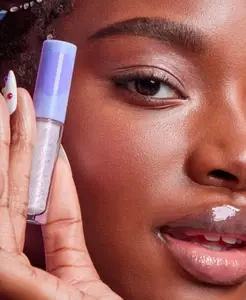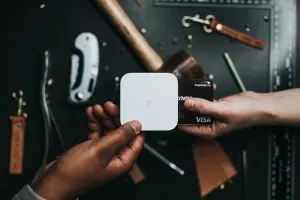Get access to exclusive updates, the latest news and the inside scoop 🍨

Instagram Marketing Tips for Shopify Part 1
We are going to be divulging our Instagram marketing tips within today's guide.
Don't want to read the whole article? 😏Click here for chapters
- Instagram Marketing Tips Part 1 📸
- Why Do Businesses Use Instagram Marketing? 📝
- Instagram Marketing Tips: Instagram Shop
- Creating An Instagram Business Account 💼
- Optimising A Instagram Business Profile
- Creating A Content Strategy 💭
- Instagram Hashtags
- Types of Hashtags #️⃣
- Market Your Shopify Store With Hashtag Best Practices
- Instagram Stories 📱

Written by Madeleine
Instagram Marketing Tips Part 1 📸
As far as social media marketing goes, Instagram has been a major channel for some time now and what’s more, is that ecommerce businesses know it. So, why is Instagram so popular with online brands?
We’d say that it is popular because Instagram provides online users with a visual focus platform that strings enthusiastic followers along, allowing businesses to obtain a high level of engagement from their audience with the right marketing methods in place.
Over the past few years Instagram has rapidly grown and evolved at a similar rate to Facebook, but the platform stands alone by adopting new features at a lightning-fast pace, making Instagram an extremely valuable marketing tool for merchants and online users.
If you're wondering how to market your Shopify store on Instagram then you've come to the right place because we are going to be divulging our Instagram marketing tips within today's beginner's guide.
More specifically, we will be underlining the fundamental tools and aspects of Instagram marketing that merchants should be using such as; optimising a profile, how to create eye-catching content and how to drive more results with hashtags. Additionally, if you’d like to learn how to evaluate your progress on the platform, stick with us because we’re providing you with the answers:
Why Do Businesses Use Instagram Marketing? 📝
Instagram plays host to many marketing campaigns belonging to both small and large businesses. The platform itself has a large and diverse audience of over 1 billion active monthly users and 500 million of these users are active on Instagram stories alone every single day.
These users are happy to engage with brands via the content that they publish, which results in higher engagement levels for the merchants that supply content for their audience.
Research and case studies demonstrate that the platform’s benefits translate into sales and leads for online businesses, but don’t just take our word for it, here are some stats that have been released by Shopify on the subject:
Nearly 11% of social media users in the US shop for products directly on the platform via the Instagram Shop feature.
It is estimated that 130 million people tap on Instagram Shopping posts every month.
More users are using Instagram earlier in the buying cycle, with 81% using the social media platform to research products and/ or services before making a purchase.
80% of Instagram users follow at least one business profile, and 72% of users claim that they’ve purchased a product that was discovered on the platform.
An additional 62% of people reported that they become more interested in a brand after seeing it featured in an Instagram Story.
Instagram Marketing Tips: Instagram Shop
As smart marketers know, users on Instagram are only too happy to follow and interact with brands on the platform and ultimately, this is how products are being discovered. With the purchasing figures via Instagram Shop on the rise, we do not doubt that new data will suggest further power to the platform in due course for ecommerce stores.
Instagram Marketing Tips: Swipe Up Tool
In a nutshell, Instagram streamlines the sales process for profiles with over 10,000 Instagram followers, as these users can incorporate ‘Swipe Up’ links into their Instagram Stories, which has the power to drive traffic directly to any webpage of the user’s choosing.
Without the Swipe Up feature, driving traffic directly to another website is not impossible, but it is a lot more difficult so, it’s no wonder why online businesses crave the use of this feature.
Instagram Marketing Tips: Link In Bio
If you’re wondering how you can send users to your website directly without the use of the Swipe Up feature, try popping a link into the bio of your profile. Sure, it’ll be more of a challenge to drive traffic there, but once users visit your profile they’ll be more likely to check out the links that you've provided, especially if you've directed them there from your stories and grid posts.
Instagram Marketing Tips: Linktree
For ecommerce stores, we can only imagine that choosing one web page would be difficult for your store. Well luckily with Linktree you don’t have to. Who is Linktree? They’re the only link that you’ll ever need.
Essentially, online users can connect their audience to all of their content with just one link. In other words, merchants don’t need to select just one link to share with their Instagram profile visitors, as they will be able to choose an endless number of links to share under one master link
What’s the best part? Linktree is fully customisable, with adjustable; links, link tags, custom colours, fonts and images to match your brand’s image. Analytics and insights are also available for businesses to discover which content is performing the best with their audience.
Merchants can also collect email subscribers, connect with third-party analytics and remarket to their audience, but the solution has many more features to offer businesses in the ecommerce field. Check them out for yourself and get started for free.
Instagram Marketing Tips: Aesthetics & Algorithm
If you’ve spent a fair amount of time on the platform, we’re sure that you’ll have noticed professional accounts strive to keep their page(s) aesthetically pleasing for users to view. Why is this important? Well, as Instagram continues to expand, the platform is becoming increasingly valuable to ecommerce businesses that have products with a strong visual appeal.
Every merchant knows that an aesthetic product is half of the challenge when it comes to convincing the customer to make a purchase. If you have a good looking product or a page that promotes a service appealingly, aesthetics will be a key stepping stone in turning a browser into a customer. After all, Instagram is a visual-centric platform and we know a little about the content that performs best:
Light images perform better than dark.
A detailed background or white space is preferred by users.
Images with dominant blue tones perform better than images with dominant red tones.
Images with a single colour perform better than those with multiple colours.
Images that feature contrasting textures tend to generate more likes.
Separately, Instagram’s algorithm shows content to users based on their interests and behaviours in the app. This makes it easier for businesses to reach people who are likely to engage with their brand.
Note:We think that it’s worth commending Instagram’s continued efforts to embrace commerce, as the platform’s evolution is ever leaning towards that of online business and marketers. The world of ecommerce is a constant influx of change and adaptation, but for those of you who are wondering specifically how to market your Shopify store, Instagram is a great route to travel down.
Creating An Instagram Business Account 💼
Next, you’re going to need to create an Instagram business account. If you already have a personal Instagram account, you’ll just need to make the switch to a professional account within the Instagram app and here’s how you do it:
1. In your profile settings, find ‘Account’ and tap ‘Switch to professional account’.
2. Pick a category that best describes your business, then select ‘Business’.
3. Then, you’ll be all set with your very own Instagram business account.
After setting up your Instagram business account you’re going to need an Instagram bio and contact details. We’ll cover this in the following section, but right now, let’s take a look at the importance of optimising your Instagram profile:
Optimising A Instagram Business Profile
Many merchants will know the basics regarding an online profile, but for those of you that don’t, you’ll need to; fill out your contact information, have a keyword-optimised description that incorporates emojis and a profile picture that’s easily identifiable, like a company logo.
This is a great way to start but to get the most out of Instagram's profile space, businesses should also include the following features in their content :
Hashtags: Did you know that hashtags can now be added to a profile description by entering # and then the desired phrase? Focusing on a branded hashtag is a good choice for most ecommerce stores and can help your business work with the Instagram algorithm.
Once users start to use this hashtag and post their content here, your business will be able to re-post and repurpose content across your profile and website.
Profile Links: Another handy tool for business accounts to utilise are clickable links that can be added to an Instagram profile’s bio. So, if a business has more than one Instagram account for different aspects of their business, users can click the link to check out their brand's sister account(s).
Highlights: We’ll talk in more detail about Highlights later on in this article, but this is still a relatively new feature that allows users to add expired Stories to different categories listed above the Instagram grid on a profile page.
This feature is a great tool for brands to separate and display the key Instagram content that highlights their brand’s story and its products.
Instagram Shop: If you choose to turn on Instagram Shopping within your business profile, you can place a call-to-action button that sends followers to an in-app store. Fashion Nova is a perfect example of an ecommerce business that is taking advantage of these Instagram features and the result is a well-optimised profile.
Creating A Content Strategy 💭
This may not come as a surprise to you, but Instagram has one of the most active user bases across the web. With 63% of Instagram users logging in at least once a day, it is estimated that browsers are spending an average of 28 minutes on the app and over 200 million of these users are visiting another profile at least once a day within 28 minutes.
Do you know what they say? Time is money and if you want to get results for your business on Instagram’s platform, you’ll need to know about the types of posts that perform best. Sure, every demographic is different, but fortunately for us, the masses of data compiled provide merchants with some insight on where to start.
If we’re talking about the types of Instagram posts that users want to see, we’d say it’s pretty open. Users on the platform are happy to come across; promotional posts, motivational quotes, product photos, DIY content, tutorial content and re-posts on their feed.
However, diversity is the price that marketers and merchants will have to pay as followers will soon get bored of seeing the same type of content churned out over and over again.
There are benefits to using different types of content on an Instagram profile. For instance, videos can share more information, making them valuable, but high-quality photos typically receive higher engagement. If you’re planning to post regular video content on Instagram’s platform, we’d suggest keeping things short and sweet, even where IGTV is concerned.
Why? Well, Instagram users are predominantly mobile users, and they aren’t likely to stick around for more than 10 to 15 seconds at a time due to the heavy load of content that presents itself on their feed. So, it’s best to take this approach so that you generate engagement for your brand while keeping things moving.
From product carousels to newer interactive content features such as the creation of Reels, there are many ways for a business to engage with its audience on Instagram, it just takes a little know-how that’s all!
Instagram Hashtags
Hashtags are a thing that started on Twitter and evolved onto Instagram and in 2021, they’re an essential part of the platform’s marketing strategy. By adding text after the # symbol in an Instagram caption, bio, or Story, users can turn any word or phrase into a clickable topic.
When someone clicks the provided hashtag(s), they’ll be taken to all the public posts tagged with that hashtag which opens up a stream of content. People now can follow hashtags too, so, those who follow that tag will be exposed to its content in their feed.
This is a great way for users to find quality content that they’re interested in and for merchants to expand their reach. If your business posts something valuable to the browser that sparks their interest, they may just start following you and who knows, in time, they could become a loyal customer.
Types of Hashtags #️⃣
To fully expand the reach of your business on Instagram, you’ll need to use the right types of Instagram hashtags. There are five key types of hashtags that are crucial for ecommerce businesses to incorporate into their online marketing strategy so, let’s explore what these are below:
N0.1: Branded Hashtags
Most brands will have a unique branded hashtag. Merchants can insert this hashtag into each post that they upload onto their profile, whilst encouraging users to attach it to any posts they share that features the brand and its products. Branded hashtags can include the name of the business, but they don’t have to. For instance, Fashion Nova's branded hashtag is #NovaBabe.
N0.2: Competition Hashtags
This hashtag is a type of branded tag created specifically for a competition. They are often used to identify contest entries for photo submission contests as well as generating contest awareness across the platform.
In addition to the main branded hashtag contest, merchants should also incorporate general contest hashtags like #giveaway, for the users who are not familiar with the brand and its products.
N0.3: General Appeal Hashtags
Certain hashtags are popular among large and diverse audiences which are known to help businesses achieve a significant reach on their posts, as they’re more likely to be sought out. Such examples include; #nofilter, #antiques, #ilovemyjob and #puppylove.
Of course, you’ll need to use hashtags like this in the right context, but one or two of these in Instagram’s allowance of 30 hashtags will work well in your business strategy.
N0.4: Niche Hashtags
Each industry will have phrases and keywords that are relevant to its target audience. These hashtags won’t generate the same reach as the generic hashtags, but they’ll drive relevant traffic to your business profile. For example, if your business sells merchandise inspired by the Harry Potter series, #harrypotter would be an ideal niche hashtag to use.
N0.5: Seasonal Hashtags
Current events and seasonal holidays can make for great hashtags, especially when businesses factor in selling-focused holidays, like Valentine’s Day or Christmas. People are likely to be searching for content that’s relevant right now, so take advantage of seasonal hashtags such as; #valentineformyvalentine and #stockingstuffer.
One of the best Instagram marketing tips that we can give you here at Karmoon is to do your research on each hashtag and make use of different combinations in each of your post categories. This will strengthen your branding while helping you reach the largest and most relevant audience possible.
Market Your Shopify Store With Hashtag Best Practices
Wondering how to market your Shopify store with hashtag best practices? Hashtag usage is one of the most significant factors that will determine success on Instagram and hashtags are unsurprisingly a little difficult to master. Fortunately, the following hashtag strategy will help your business to broaden its reach, driving results:
List a branded hashtag on your business profile.
Use a limited amount of hashtags. The limit is 30 hashtags per post. However, numerous case studies have found that somewhere between 8 - 11 hashtags for each post will be the sweet spot, especially if you diversify the types of hashtags.
Switch up your hashtags between each post that you publish. The best way for merchants to mix up their hashtags is to create groups of hashtags you can cycle through for different posts. Not only will this increase your visibility to different audiences, but it can also keep your account from being flagged as spammy by Instagram.
Take time to explore each hashtag. This can help you discover new hashtags to target, and ensure that you don’t accidentally use a banned hashtag or jump on a topic without knowing what it means.
Instagram Stories 📱
Instagram Stories started as nothing more than an add-on feature borrowed from Snapchat. In a nutshell, Stories are a great way to share short-lived photos and videos with followers at that moment, as they disappear after 24 hours unless they are added to a Highlight, where content lives on forever.
Stories are the tool that stuck as brand Stories have an 86% completion rate on average, which is a great figure by any standard. Over time, Instagram Stories have developed into an essential part of the platform as Story ads and Highlights were components of the platform's evolution.
The first thing that you should know is that there are a variety of strategies that businesses can use to drive results from Instagram Stories and each of them will benefit a business in different ways. So, let’s take a look at how to market your Shopify store with these tools:
N0.1: Share Customer Content
Merchants often use Stories to showcase user-generated content, which is always a crowd-pleaser.
Many online businesses experience an increase in followers when they use this marketing approach frequently. Consumers love to see that brands care enough about them and their content to feature it on their profile. It also saves businesses from having to create the content themselves and acts as powerful social proof. So, it’s a win-win situation for everyone involved.
N0.2: Acquire Customer Content
Instagram Stories can help ecommerce businesses to obtain UGC (user-generated content) in several different ways. Firstly, businesses can place calls to action for users to share pictures of their latest purchases. Poll stickers are another way for brands to receive feedback and generate immediate social proof.
N0.3: Create Authentic Content
Instagram Stories are quirkier in format and style as opposed to content on the feed, so it’s a great place to showcase the fun side of your business. We often think of Stories as less airbrushed as more real compared to the squares on a profile grid, but that’s not a bad thing.
Everything has its place and the grid is like a portfolio, where businesses put their best product photography forward, but Stories are a great way to get to know a brand and learn more about who they are and what they’re working on behind the scenes.
N0.4: Going Live
Instagram Lives are Stories that essentially allow users to record a live broadcast and share it with their audience in real-time. Instagram Lives can be streamed straight from a mobile phone so anyone on the platform can use this feature. From the perspective of an ecommerce business, we would recommend making use of this handy tool to; host Q&As, talk about a specific topic and interview featured guests.
When you’re all finished with the live stream, you can set the video to be played alongside the rest of your Stories should you choose to. By doing this, audience members that missed the original stream will have a chance to catch up on the content before the story time frame is up.
Check out Shopify’s guide on how to use Instagram Stories for marketing for a deeper look at what Stories can do for your business.
So, that concludes the first part of our guide to Instagram marketing tips for ecommerce merchants, but don't worry we'll be back shortly with the second instalment.
If you’re looking for a Shopify agency designer or developer to assist you with your business, we’d love to hear from you. Get in touch to get started!
Get Started with Shopify
Looking to get started with Shopify? Take advantage of Shopify's 14-day free trial, no credit card is required.
If you're actively looking to work with a Shopify agency designer or developer to assist you with your business, we'd love to hear from you. Get in touch to get started!
Want to read some more?
Have a look over more posts related to this one















